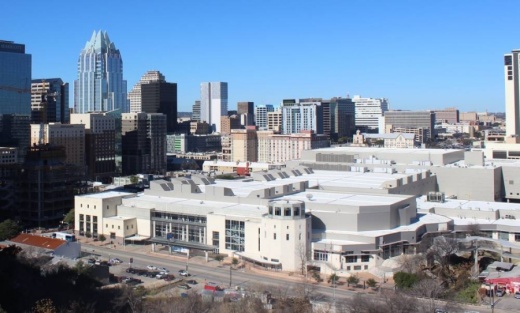That estimate comes from a 2019 analysis from the University of Texas Center for Sustainable Development, and it was front and center last year when Austin City Council unanimously supported the effort to expand the convention center. City officials maintain that the facility, last expanded in 2002, is out of date and out of step with more modern convention halls in big cities throughout the country.
City staff said they would deliver an official cost estimate of the project in spring 2021.
Austin Mayor Steve Adler has vocally pushed for a convention center expansion for years and has vowed that the expansion will bring in more money for local businesses; fill the city’s purse with money that can fund projects and initiatives across the city; and transform the southeastern quadrant of Downtown Austin. Elected officials have prioritized creating a facility that engages the local community and is not just a space for tourists.
The project, which could come in three phases, remains far out, and those close to the project estimate that the whole endeavor could take eight to 10 years. However, Austin City Council will take a set of votes Sept. 17 that will push the project forward. The first is to spend up $310,000 on the San Antonio-based law firm Hornberger, Fuller, Garza & Cohen to consult on convention center expansion-related questions; the second is to negotiate a purchase of two city blocks west of the existing convention center for an initial payment of up to $6.3 million—two blocks targeted for the first phase of expansion of the new convention center.
The two city blocks, bound by East Fourth and East Second streets to the north and south and by Trinity Street and San Jacinto Boulevard to the east and west, currently host names such as the Vince Young Steakhouse, Fogo de Chao Brazilian Steakhouse, Fleming’s Prime Steakhouse and Wine Bar, P.F. Chang’s and MAX’s Wine Dive. According to the Travis Central Appraisal District, the properties together cost north of $63 million.
City staff documents state that council’s vote is the first to a two-step negotiation process. Staff from the Austin Office of Real Estate were not immediately available to clarify how the purchase will work.
Post-pandemic potential
Although City Council is expected to vote in the affirmative this week, the pandemic has spurred questions over what the future holds for the desirability of conventions and large gatherings and over whether such a massive investment in a Convention Center expansion during an economic recession will pay off, especially since convention centers typically operate at a loss.During a City Council work session Sept. 15, Tom Hazinski, managing director for the city-hired consultant firm HVS Convention, Sports and Entertainment, admitted that the near-term outlook for the convention center market was highly uncertain, though he did attempt to assuage council member concerns over demand.
Hazinski said his survey of potential and past Austin Convention Center users yielded “extremely impressive” demand for an expansion, pointing out that Austin’s facility ranked 14th in the country in total function space. Hazinski contended that economic vitality, not health concerns, would most impact the convention center’s success in the coming years once the pandemic has subsided. He said the health of the convention center market rebounded after the two recessions in the 2000s and predicted that trend would continue.
District 9 Council Member Kathie Tovo, whose district surrounds the Austin Convention Center, said she believes this recession is unlike the other two and that she is not sure how long it would take for people to feel comfortable in large crowd environments once the pandemic had been eradicated.
Hazinski assured that the need for in-person interactions would survive the pandemic, pointing to the aftermath of the terrorist attacks of Sept. 11, 2001, which threatened to completely upend how people interacted with one another, especially in large gatherings. He said the event spaces and people will find ways to adapt to the new health requirements and develop a plan to deal with the next pandemic.
“The basic human need [to gather in person] is foundational is going to be there,” Hazinski said. “My firmly held view is that the demand is not going to change.”
The report from HVS also estimated that although the expanded Austin Convention Center would still operate at a loss between operating revenue and expenses, it could bring in a citywide economic impact of more than $800 million annually, up from the $495 million impact the existing convention center is estimated to produce.
The report showed an increase in the number of full-time equivalent jobs created by the convention center market from 2,868 to 4,640. The convention business in Austin also boosts the local hotel industry. Over a five-year period, convention center event days produced a 12.1% boost in hotel occupancy and a $37 increase in the average daily room rate.





